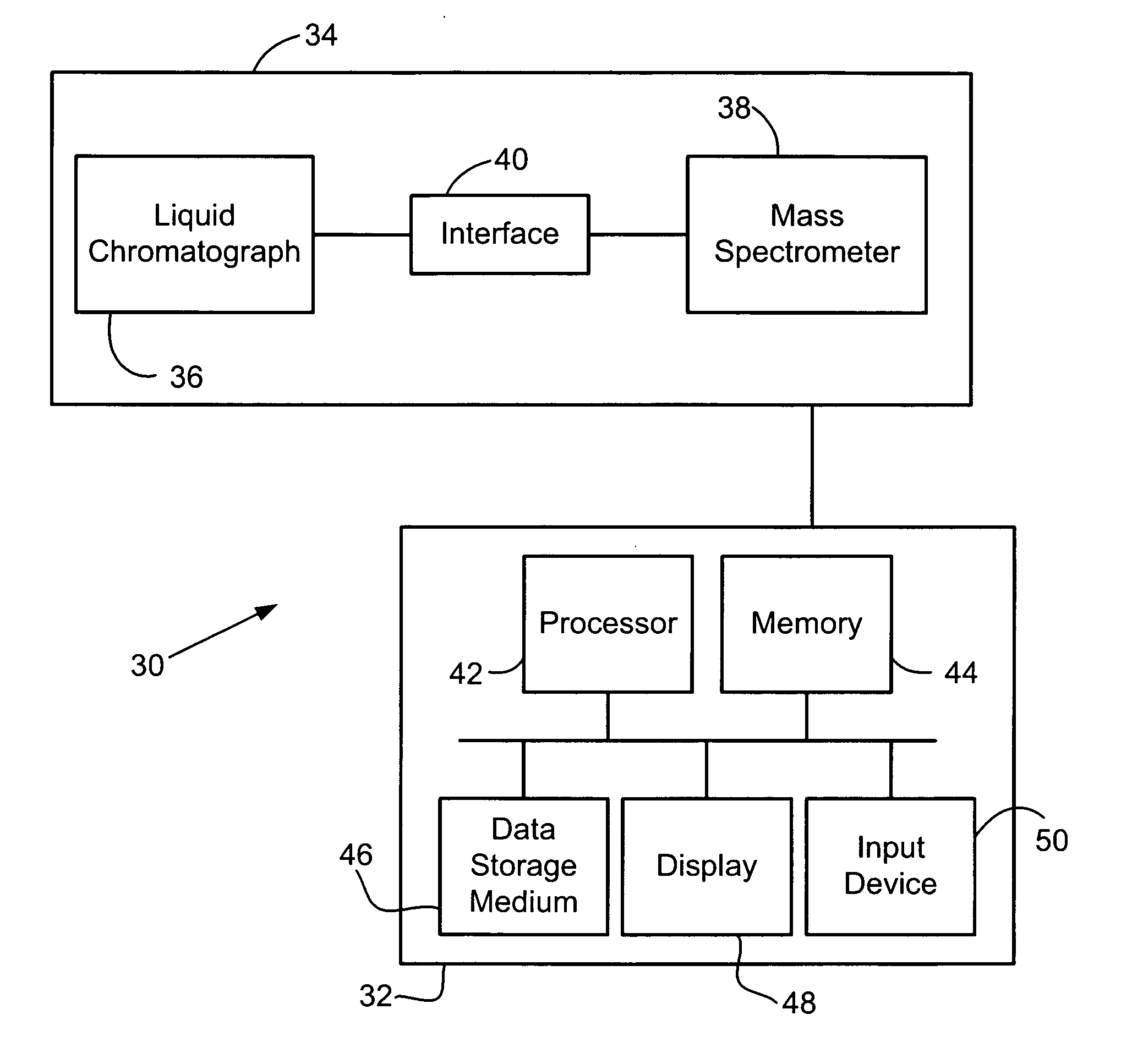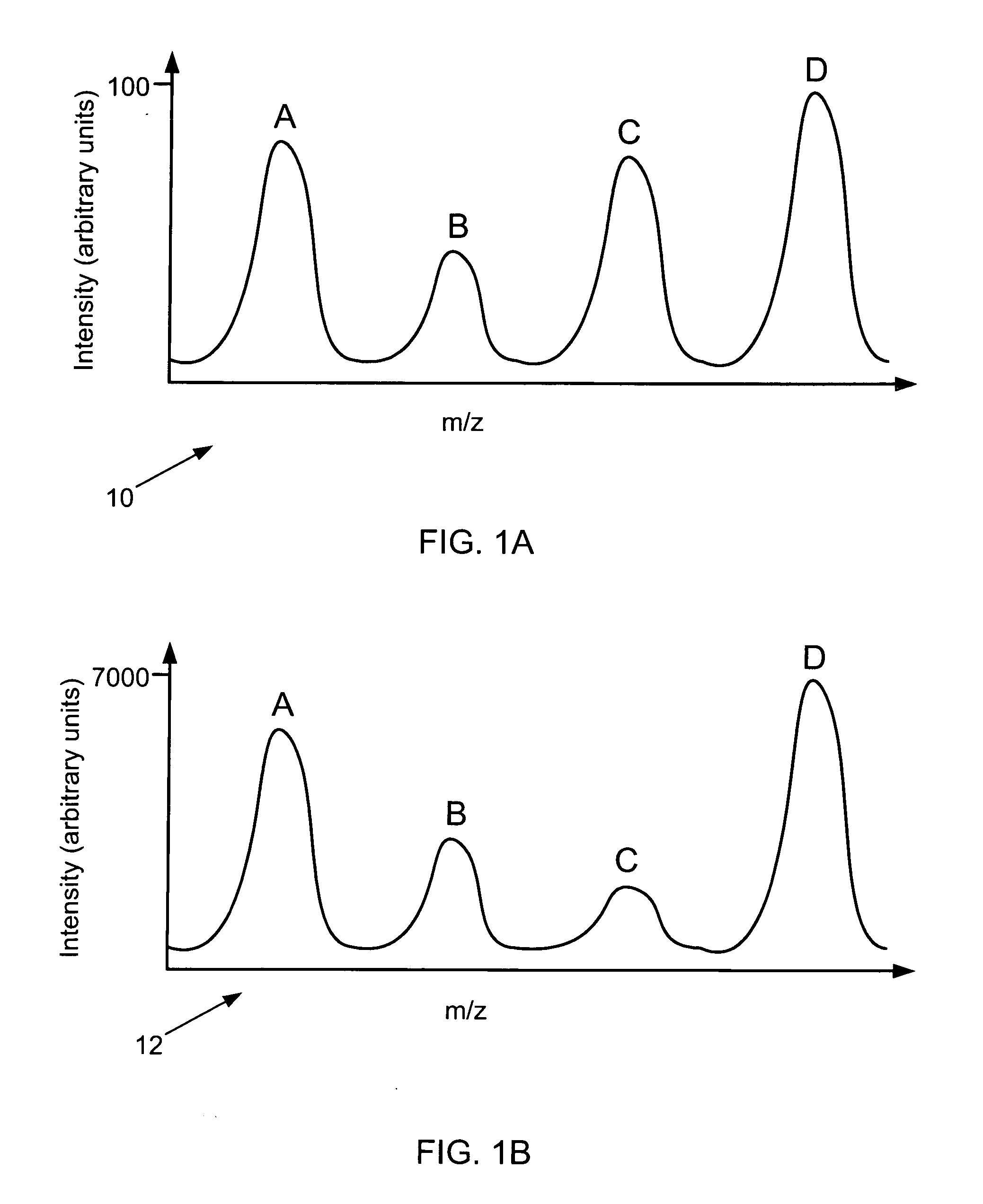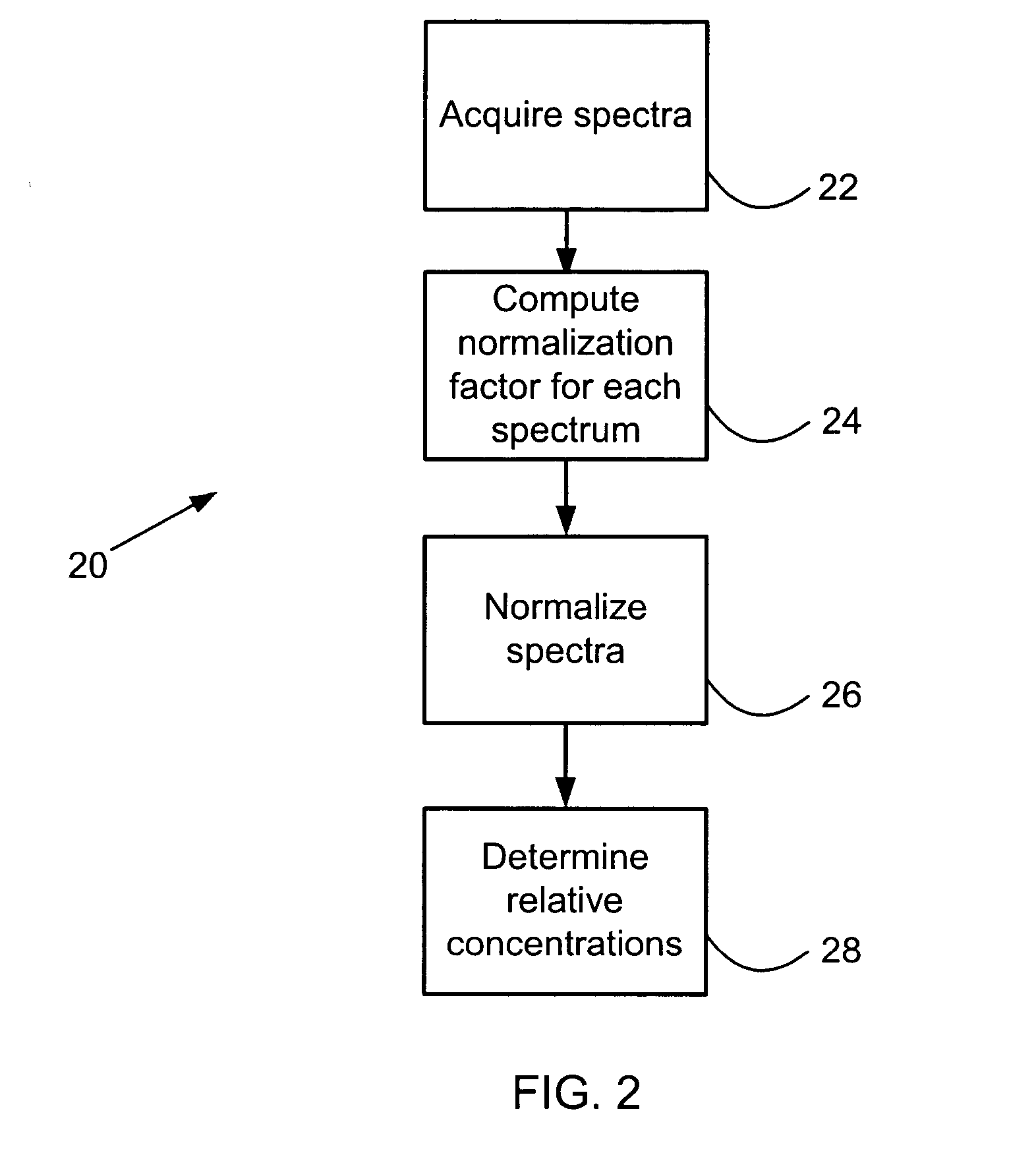Mass spectrometic quantification of chemical mixture components
a mass spectrometic and chemical mixture technology, applied in the direction of dispersed particle separation, particle separator tube details, separation processes, etc., can solve the problems of inability inability to provide comprehensive characterization of the biochemical and cellular functioning of complex biological systems, and inability to use gene information to identify certain classes of proteins
- Summary
- Abstract
- Description
- Claims
- Application Information
AI Technical Summary
Problems solved by technology
Method used
Image
Examples
working examples
Working Example 1
5-Component Protein Mixtures
[0054] A method of one embodiment of the invention was implemented using three five-component protein mixtures in which two of the components varied in concentration,
[0055] while the remaining three were constant. Relative mass concentrations within the samples were as follows:
BovineBovineBovineSampleHorseribonucleaseserumcytochromeHumannumbermyoglobinAalbuminChemoglobin111111211150.231110.25
All three samples were denatured by 6 M guanidine hydrochloride, reduced by 10 mM dithiothreitol at 37° C. for 4 hours, and alkylated with 25 mM iodoacetic acid / NaOH at room temperature for 30 minutes in the dark. The denaturant and reduction-alkylation reagents were removed from the mixtures by buffer exchange against 50 mM (NH4)2CO3 at pH 8.3 three times using 5-kDa molecular weight cut-off spin filters. Modified trypsin at 1% weight equivalence of the proteins was added to the mixtures for incubation at 37° C. for 14 hours. The same amount o...
working example 2
Normalized Peak Intensities of Human Serum Sample Spectra
[0059] Human serum samples were analyzed to determine measurement variability after normalization using one embodiment of the present invention. Pooled human serum was purchased from Sigma-Aldrich (for proteome studies) and obtained from four anonymous healthy donors at the Stanford Blood Center (for metabolome studies). The serum was fractionated into serum proteome and serum metabolome using a 5-kDa molecular weight cut-off spin filter. Twenty-five μL of the serum proteome was diluted with 475 μL of 25 mM PBS buffer (pH 6.0) before being applied to affinity beads from ProMetic Life Sciences for removal of human serum albumin and IgG. The albumin- and IgG-depleted serum proteome was denatured, reduced, alkylated, and trypsin digested following the procedures described in Working Example 1 to yield 200 μg proteome. The serum metabolome was desalted using a C18 solid-phase extraction cartridge. The proteome fraction was divid...
working example 3
Human Serum Spiked With Non-Human Proteins and Small Molecules
[0061] Human blood serum proteome spiked with horse myoglobin and bovine carbonic anhydrase II, as well as human blood serum metabolome spiked with low-molecular weight species, were analyzed using methods of embodiments of the invention. The spiking is not part of the quantification method, but was rather used to test the method.
[0062] Human serum was obtained and fractionated into serum proteome and serum metabolome as described in Working Example 2. The two non-human proteins were spiked into 20μg of unprocessed human serum proteome at amounts ranging from 100 fmol to 100 pmol. The spiked proteome samples were denatured, reduced, alkylated, and trypsin digested following the procedures described in Working Example 1. Varying amounts of an equimolar test compound mixture were added to 100 μL of the metabolome prior to sample clean-up using the solid-phase extraction C18 cartridge. The components added were des-asp1-a...
PUM
 Login to View More
Login to View More Abstract
Description
Claims
Application Information
 Login to View More
Login to View More - R&D
- Intellectual Property
- Life Sciences
- Materials
- Tech Scout
- Unparalleled Data Quality
- Higher Quality Content
- 60% Fewer Hallucinations
Browse by: Latest US Patents, China's latest patents, Technical Efficacy Thesaurus, Application Domain, Technology Topic, Popular Technical Reports.
© 2025 PatSnap. All rights reserved.Legal|Privacy policy|Modern Slavery Act Transparency Statement|Sitemap|About US| Contact US: help@patsnap.com



